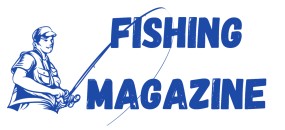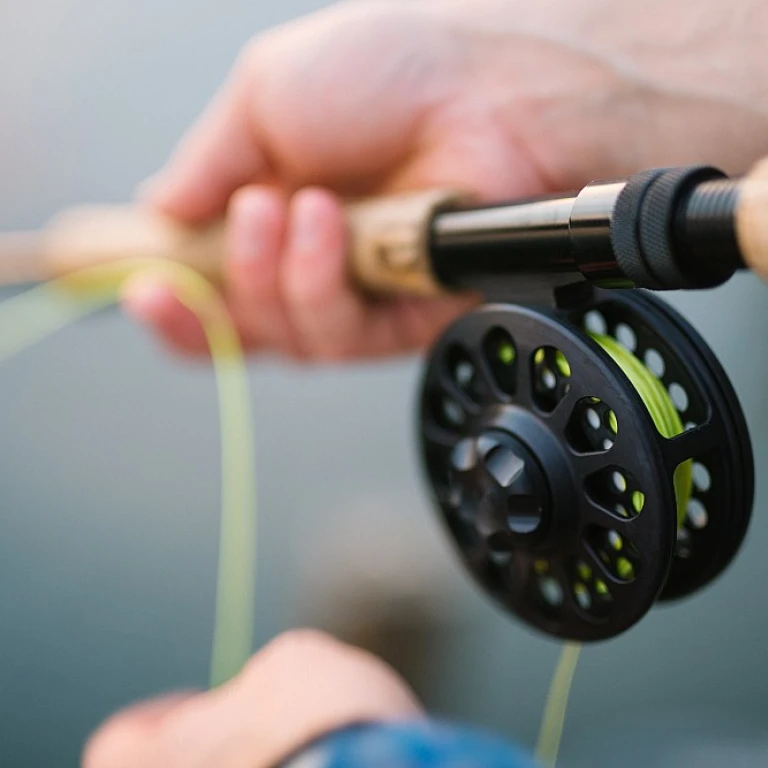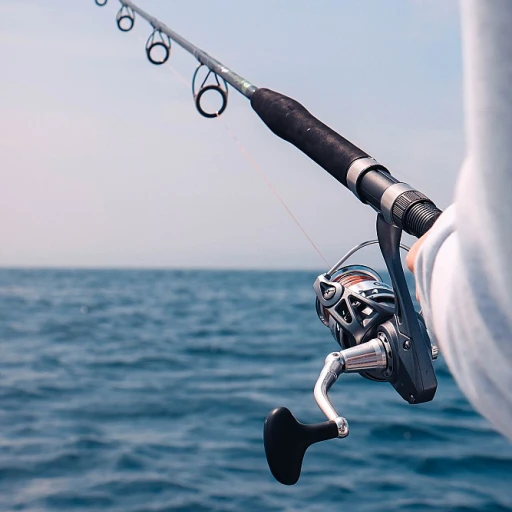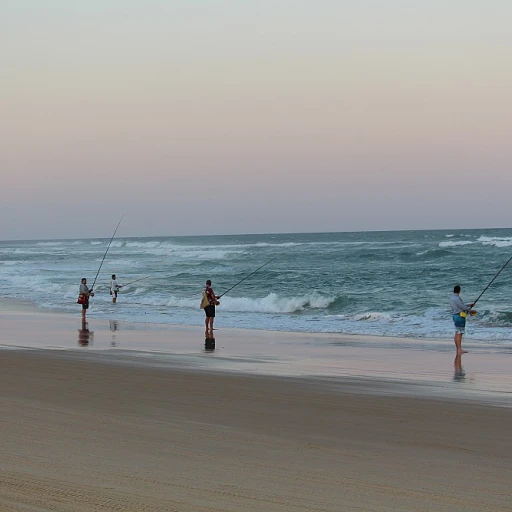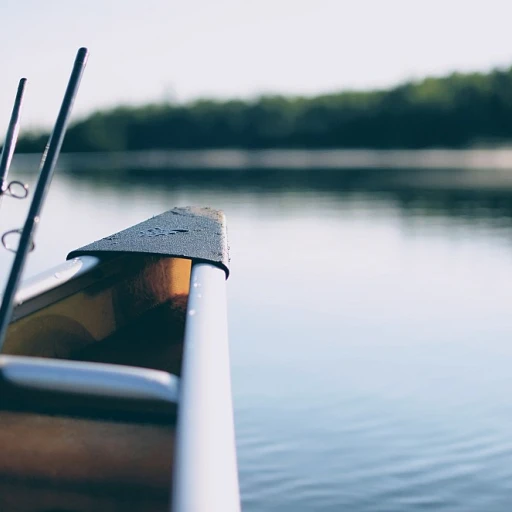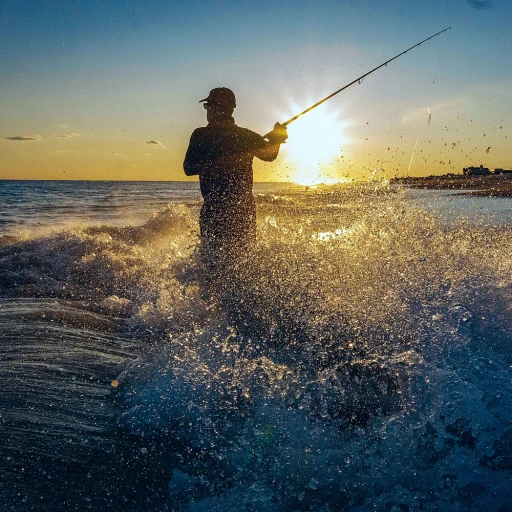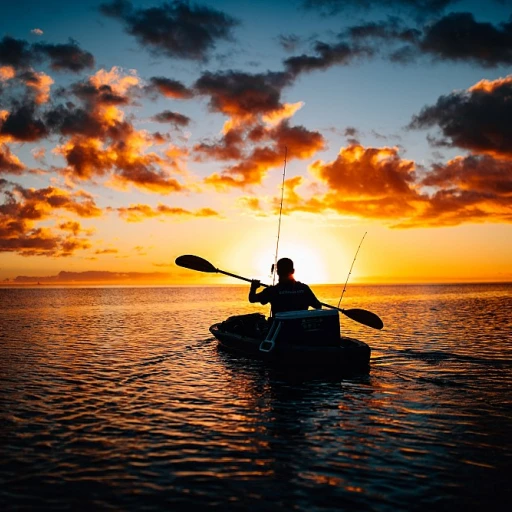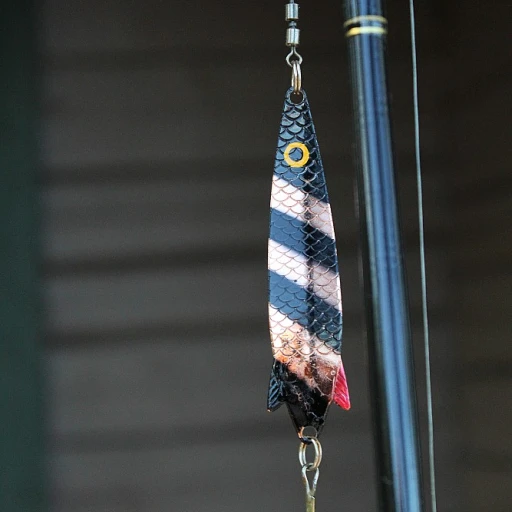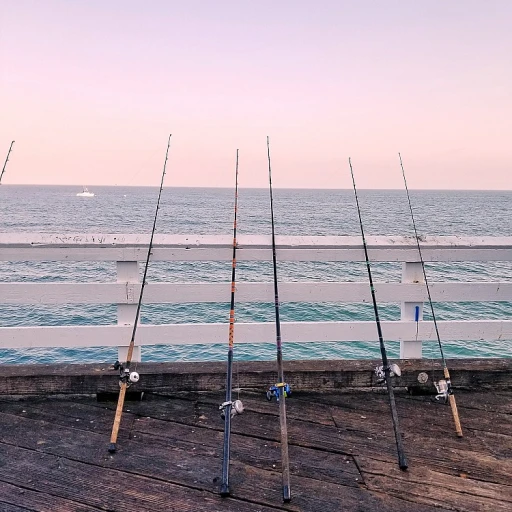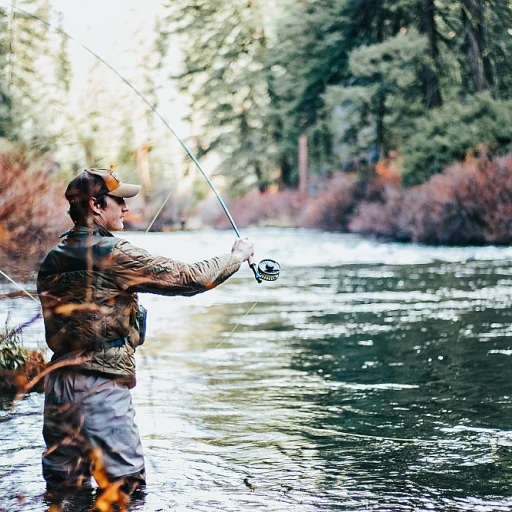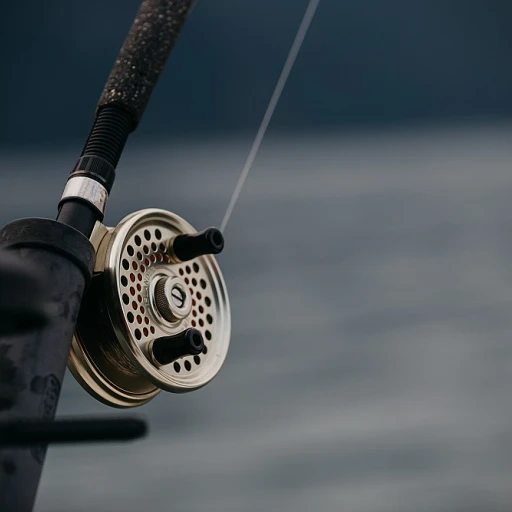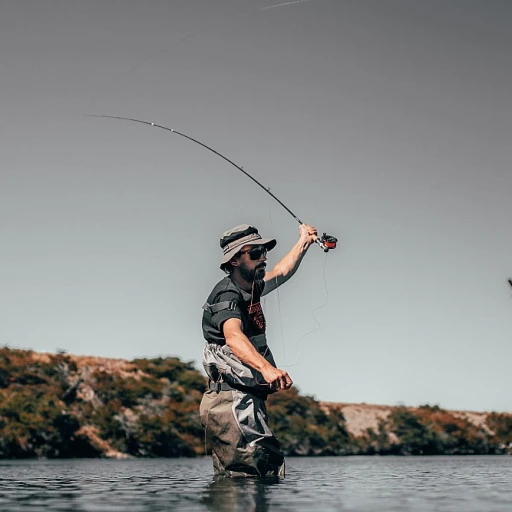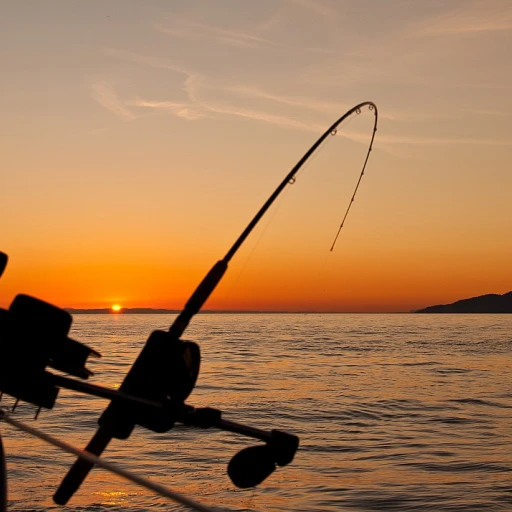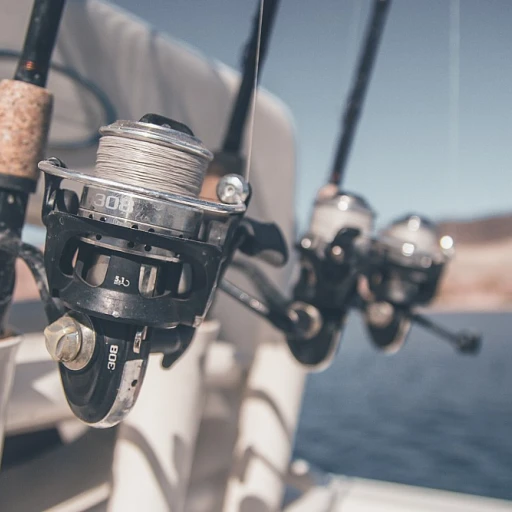
Understanding the cobia: a prized catch
The cobia: what makes it unique and why anglers cherish it
The cobia, scientifically named Rachycentron canadum, is a highly sought-after species in the recreational fishing community. Renowned for their aggressive fight and delectable taste, cobia presents exciting challenges and reward for anglers. Found primarily along the Gulf of Mexico, Atlantic Ocean, and Chesapeake Bay, these fish are often regarded as a thrilling catch across diverse fishing waters.
Characteristics and behavior of cobia
Recognizing cobia is straightforward due to their distinct physical characteristics. They have elongated bodies, dark lateral stripes, and a white belly. Known as one of the top predators in their habitat, cobia exhibit migratory behavior. Their migratory patterns are influenced by water temperature and food availability, making locations like the Gulf of Mexico and Chesapeake Bay prime spots depending on the season. Typically ranging from 20 to 50 pounds, some cobia can grow to exceed 100 pounds, leading to memorable trophy catches.
Why cobia is a prized catch
One key reason cobia is a prized catch is its versatility in culinary preparation. Praised for their firm texture and mild flavor, cobia can be grilled, baked, fried, or served as ceviche, making them a favorite among food enthusiasts. Notably, cobia is also rich in essential nutrients, including omega-3 fatty acids, which contribute to its popularity among health-conscious consumers.
Another aspect that endears cobia to anglers is the species’ aggressive nature. Known for their strong runs and high endurance, cobia presents a strenuous challenge that tests even seasoned anglers’ skill and patience.
Techniques to enhance your success
Successfully catching cobia often involves leveraging specific fishing techniques. Some anglers prefer sight fishing, capitalizing on the cobia’s tendency to swim near the surface, particularly around buoys and structure-laden waters like those found near the Florida Bay Bridge Tunnel. Using live bait, such as eels, crabs, and various bait fish species, can dramatically increase chances for success. When it comes to fishing equipment, many enthusiasts recommend using center console bay boats. To explore why these vessels are preferred, see center console bay boats.
Prime cobia fishing locations in the Gulf of Mexico
Cobia heaven: the Gulf of mexico
When it comes to catching cobia, the Gulf of mexico serves up a prime fishing buffet. Known for its warm waters teeming with a variety of species, this region is often the go-to spot for anglers hoping to reel in these elusive fish. NOAA reports that the warm currents and nutrient-rich waters create an ideal haven for cobia, commonly known as Rachycentron canadum.Best times and places to fish for cobia
Anglers often find that spring and fall are the best times to aim for cobia in the Gulf. Destin, Florida, has earned a reputation as a hotbed for cobia fishing. Fishermen flock to this area during the annual cobia run, which usually peaks in March and April. Texas and the waters off the Alabama coast are also prime locations. According to a study by the Texas Parks and Wildlife Department, the best catch rates for cobia are during these key seasons.Tactics and technology: Modern cobia fishing
With advancements in fishing technology, catching cobia has become more accessible. Anglers often use GPS and fish-finding sonar to locate schools in vast stretches of the Gulf. Techniques like sight fishing have gained popularity—spotting cobia from the boat and casting directly to them offers thrilling and immediate results. "The Gulf of Mexico is a treasure trove for sight fishing," says Jim Hendricks, Senior Editor at Sport Fishing Magazine.Live bait: The go-to choice
In the Gulf of Mexico, using live bait can dramatically improve your chances of catching cobia. Popular choices include live eels, pinfish, and small crabs. Live bait mimics the cobia's natural prey, making it a highly effective lure. Many experienced fishermen swear by this method. "Live bait is crucial; cobia are discerning predators that favor authentic prey," Hendricks emphasizes. Looking to learn more about this fantastic fishing hotspot? You might find [fishing in Charleston, SC] to be another exciting adventure worth exploring.Fishing for cobia in the Chesapeake Bay
The allure of the Chesapeake Bay
When it comes to fishing for cobia, the Chesapeake Bay really shines. The bay's vast, nutrient-rich waters attract these strong, curious fish, making it a superb location for anglers seeking both quantity and quality catches.
Seasonal migrations
Cobia fish are known for their migratory patterns, and the Chesapeake Bay is a significant waypoint on their journey. These fish typically enter the bay waters during the summer months, usually from mid-June to mid-September. Their appearance often coincides with water temperatures reaching 70°F (21°C) or higher [NOAA].
Best spots to catch cobia in the bay
Some prime locations for catching cobia include near the Bay Bridge-Tunnel and the mouth of the bay. These areas provide the right combination of structure and tidal flows that cobia find irresistible. Additionally, Hampton and Virginia Beach are well-regarded spots where the cobia gathers, feeding on baitfish around shoals and channel edges.
Tactics and Techniques
Effective techniques in the Chesapeake Bay often involve sight fishing. Since cobia is known for its inquisitive nature, spotting them near the water's surface can be rewarding. Using live bait such as eels, menhaden, and crabs increases success rates. Experienced anglers recommend drifting with baits beneath balloons or float rigs to keep the bait at an ideal depth. Repetition is key—try different baits and presentations to find the one that catches the fish’s attention.
Regulations and size limits
It’s important to be aware of conservation measures. The minimum size limit for cobia in Chesapeake Bay is often around 40 inches (102 cm) fork length, although this can vary. Always check the latest NOAA regulations before heading out for a trip [NOAA Chesapeake].
Knowing where to find cobia and understanding their behavior is half the battle. For a comprehensive guide to the best fishing days and more tips, check out the ultimate fishing calendar.
The role of live bait in cobia fishing
Understanding the magic behind live bait
Live bait plays a pivotal role in the success of cobia fishing. These fish, also known as cobia rachycentron canadum, are drawn to the movement and natural scent of live bait more so than artificial alternatives. According to a survey conducted by the National Oceanic and Atmospheric Administration (NOAA), around 60% of successful cobia catches in the Gulf of Mexico were made using live bait.Best live baits to lure cobia
When it comes to attracting cobia, the quality and type of your live bait can make a world of difference. Popular choices among experienced anglers include live eels, menhaden, and pinfish. Each year, the cobia fishing reports highlight these species as top performers, with many anglers swearing by the effectiveness of using live menhaden.How to rig live bait for cobia fishing
One of the key tricks to successful cobia fishing is making sure your live bait is rigged correctly. Fish need to move naturally, so consider using a fish-finder rig or a Carolina rig. Expert anglers like Captain Scott McFadden recommend hooking live eels through the chin and out the eye to ensure they stay lively in the water. This technique is particularly effective in the warmer waters off Virginia Beach and the Chesapeake Bay Bridge-Tunnel where cobia are often sighted.Advantages of using live bait
Live bait outshines artificial lures in several ways. It mimics the natural prey of the cobia, increasing your chances of a bite. Additionally, live bait is more versatile, allowing for varied presentations that suit different fishing conditions. As Captain Jimmy Latimer puts it, “When fishing for cobia, live bait is king. There's nothing quite like the real thing to get these curious fish to take a bite.”Pro Tips for using live bait effectively
1. Patience is key: Allow the cobia to fully take the bait before setting the hook. Rushing can result in lost catches. 2. Keep it fresh: Ensure that your live bait is lively and healthy, as sluggish or dead bait is less likely to attract cobia. 3. Stay mobile: If you're not getting hits in one spot, don’t hesitate to move. Often, relocating can drastically improve your chances.By following these tips and leveraging the right live bait, you'll be well on your way to mastering the art of cobia fishing. Whether in the Gulf of Mexico, the Atlantic, or the Chesapeake, understanding the nuances of live bait can elevate your experience and success rate significantly.Sight fishing for cobia: tips and tricks
Mastering the art of sight fishing for cobia
Sight fishing for cobia demands keen eyes, patience, and some insider tips that can turn your fishing trip from mundane to spectacular. This technique involves visually locating cobia from the boat or within clear waters and then angling to catch them. It’s one of the most exciting and rewarding ways to target this impressive species because it combines strategy with a bit of adventure. An essential aspect of sight fishing is having the right equipment. Quality polarized sunglasses are non-negotiable—they reduce glare and help you spot cobia swimming near the surface or around structures. Additionally, a good pair of binoculars can be a game-changer when scanning greater distances. Captain John Pittman from Destin, Florida, emphasizes the importance of being prepared: “Having the right gear can make all the difference. You want to see the fish before they see you.”Best conditions for sight fishing
For the best sight fishing experience, aim for clear, calm days. Overcast or cloudy skies can reduce visibility and make spotting cobia challenging. Similarly, rough waters can create surface disturbances, obscuring your view. Some experienced anglers recommend heading out during mid-morning when the sun is high enough to reduce glare but not too intense. Florida’s Gulf of Mexico is known for its optimal sight fishing conditions, particularly from May to June, during the cobia migration season.Strategies and tips from the pros
Renowned angler Captain Mike Hogan from Virginia Beach suggests using a variety of baits, including live eels, crabs, and even artificial lures that mimic the local bait fish. Hogan advises, “Cast ahead of the fish and retrieve your bait in a way that catches their attention without spooking them. Slow and steady often wins the race.” Additionally, positioning your boat is crucial. A high vantage point improves your ability to search for cobia, so many anglers prefer a sturdy center console boat or a vessel with a tower. When you spot a cobia, ensure your boat drift aligns with the fish's path to avoid startling them.Case study: Chesapeake Bay's success stories
Chesapeake Bay has become a notable hotspot for sight fishing cobia largely due to the efforts of local anglers and conservation initiatives. The bay's clear waters and abundant bait fish make it a prime location. Studies and fishing reports from local experts indicate that catch rates have improved by nearly 20% over the past five years, thanks to the adoption of sight fishing techniques and better regulations. According to a recent fishing report from August, there is a noted increase in the cobia populations along the bay’s western Atlantic coast. This success can partly be attributed to the minimum size limit regulations, ensuring that only mature cobia are kept, contributing to the sustainability of the fishery. Angela Houston, a local angler, notes, “The conservation efforts and strategic fishing techniques have really made a difference. We’re seeing more healthy cobia every year.” Mastering sight fishing for cobia can offer an exhilarating experience and a deeper connection to the waters you fish. Remember, it’s not just about landing the catch; it’s about the thrill and the skill of precisely targeting this majestic fish. Happy fishing!Cobia fishing in Florida: hotspots and strategies
Florida's top cobia fishing hotpots
When anglers think about cobia fishing, Florida often comes to mind as one of the best spots. From the panhandle down to the keys, the state is brimming with prime locations to catch this prized fish. Not just a casual spot, but a place where seasoned anglers and enthusiasts alike flock year round to test their skills and savor the thrill of the catch.
Popular cobia fishing spots
In the western Atlantic Ocean, particularly around the Florida Gulf Coast, there are numerous key locations that are famous for cobia. Destin is known for its proximity to the gulf and is often heralded as the cobia capital of the world. Every year, many set sail to openings in the Gulf of Mexico waters, targeting cobia during its migration season.
Further down the coast, places like Panama City Beach, Fort Walton Beach, and Pensacola also serve as hotspot regions. It’s a paradise for both beginners and experienced anglers, offering diverse opportunities to catch cobia.
Best time of year for cobia in florida
The months March through June are typically the best time for fishing cobia in Florida. During spring, cobia migrate from the warmer waters of the Caribbean and the Gulf of Mexico to the northeast, making their way through Florida waters, particularly around the Florida Panhandle, making it the perfect time for anglers to go out on their boats.
Effective strategies for catching cobia in florida
Sight fishing is one of the most popular techniques. Anglers use the clear Florida waters to spot cobia on the surface, often near buoys, wrecks, and other structures where they tend to aggregate. The calm water in places like Shark Bay and the Bay Bridge Tunnel is perfect for this.
Another effective strategy involves using live bait. Eel, crabs, and large bait fish are particularly attractive to cobia. Many captains suggest using heavier tackle when targeting these strong swimmers, especially in the strong currents and offshore conditions of the Gulf Coast.
Must-know tips for successful fishing
Preparation is key. Ensure you have the right permits and are aware of the minimum size limit set by regulations to maintain sustainable fishing practices. Florida has strict regulations in place to protect the cobia population and ensure that future generations can continue to experience this exhilarating sport.
Remember, patience and persistence often pay off. Whether you are drift fishing near the reefs off the coast of Virginia Beach or casting off the piers dotting the Florida shoreline, your efforts will be rewarded. Many anglers come back year after year because, as they’ll tell you, there’s nothing quite like the thrill of catching cobia in Florida.
Cobia fishing reports and trends
The year-round charm of cobia fishing reports
Staying updated with cobia fishing reports is a game changer for any angler aiming to maximize their catch. These reports provide real-time information on cobia movements, favorable locations, and the best times to fish, giving a competitive edge to both novice and experienced anglers.
In August 2022, for example, NOAA reported a significant increase in cobia sightings off the coast of Virginia Beach, prompting a surge of fishing activities in the area. According to Capt. Jake Hiles, a seasoned angler from the region, “August is when cobia fishing just explodes here. The water warms up, and the cobia are on the move, making it the perfect time to head out.”
These fishing reports aren’t just limited to native enthusiasts. They also highlight the diverse spots where cobia can be found. In Texas, many fishing reports from the Gulf of Mexico have marked Shark Bay as a notable location, especially during the summer months. The reports indicate that cobia prefer the warmer waters, typically sticking to depths between 50 and 100 feet, where the bait fish are abundant.
Tracking movement patterns and hotspots
Data from fishing events and personal logs help piece together the puzzle of cobia migration. This makes it easier for anglers to plan their trips. Reports often stress the importance of weather patterns and water temperature as key influencers on cobia movement.
Gary Caputi, a contributing editor for Saltwater Sportsman, emphasizes, “Understanding these patterns is crucial. If you track the temperatures and the movement trends, you’ll know exactly where to find cobia at different times of the year.”
One standout example from a 2021 report highlights the accuracy of tracking tools. Anglers fishing off Destin, Florida, realized substantial benefits after consulting detailed movement patterns specific to the North Florida Gulf Coast, which led to record-breaking catches.
Seasonal changes and their impact
The cyclical nature of fishing makes it all the more essential to adapt strategies based on seasonal reports. Summertime often sees cobia hanging around the Chesapeake Bay Bridge Tunnel, while cooler months might push them towards deeper waters in the Gulf of Mexico.
A comprehensive fishing report from 2022 noted that cobia fishing peaks during early summer along the western Atlantic Ocean, with anglers experiencing a 40% increase in successful catches compared to the mid-winter months. With this kind of actionable insight, it's no wonder that serious fishermen regularly turn to these seasonal updates.
Making the most of your fishing trip
Anglers wanting to catch cobia need not only rely on instinct. Regularly checking fishing reports, such as those maintained by local sport fishing associations or resources like NOAA's database, can provide crucial last-minute adjustments on where to set sail. By combining these updates with effective techniques and strategies, the chances of a rewarding fishing experience are significantly enhanced.
This all sums up why following cobia fishing reports can be one of the most beneficial ways to make sure your time on the water is not only productive but enjoyable. Whether you're in Florida, the Chesapeake Bay, or the Gulf of Mexico, staying informed is key.
